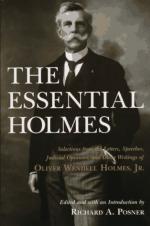|
This section contains 8,092 words (approx. 27 pages at 300 words per page) |

|
SOURCE: "Disfigurement and Reconstruction in Oliver Wendell Holmes's 'The Human Wheel, Its Spokes and Felloes,'" in The Body and Physical Difference: Discourses of Disability, The University of Michigan Press, 1997, pp. 71-88.
In the following essay, Yuan analyzes Holmes's main work on disability and prosthetics and considers his philosophy that disabled citizens be rehabilitated and assimilated back into society.
Susan Reynolds Whyte, summarizing Henri-Jacques Stiker's monumental history of the discourse on bodily abnormality in the West, Corps infirmes et sociétés, writes that after World War I "a broad paradigm shift" occurred in Europe and the United States: now "damaged people" were to be "rehabilitated," that is, they were to be "returned to a real or postulated preexisting norm of reference, and reassimilated into society"; "[w]hereas earlier epochs situated the infirm as exceptional in some way, the modern intention (or pretension) is that they are ordinary...
|
This section contains 8,092 words (approx. 27 pages at 300 words per page) |

|


